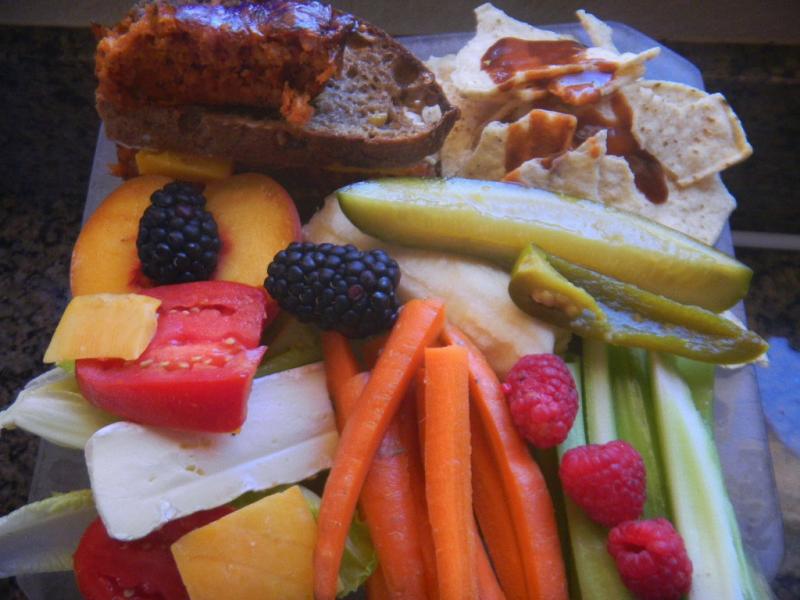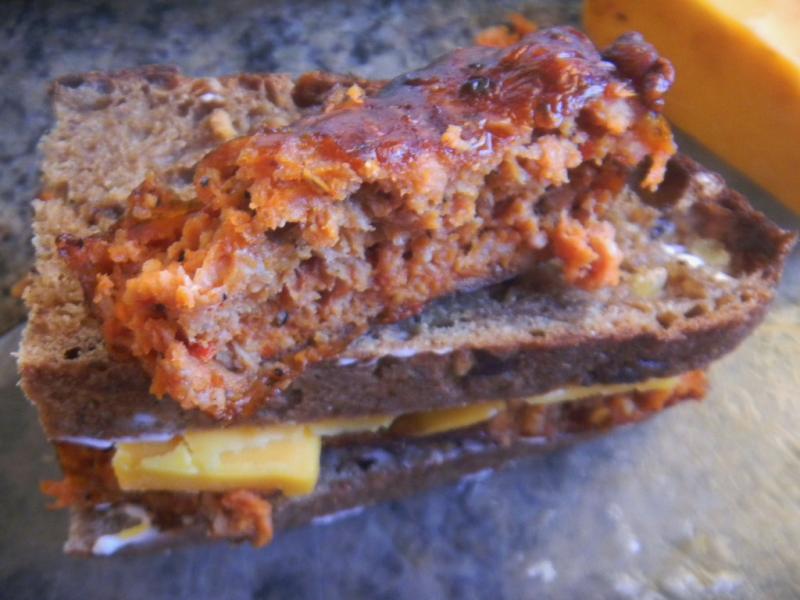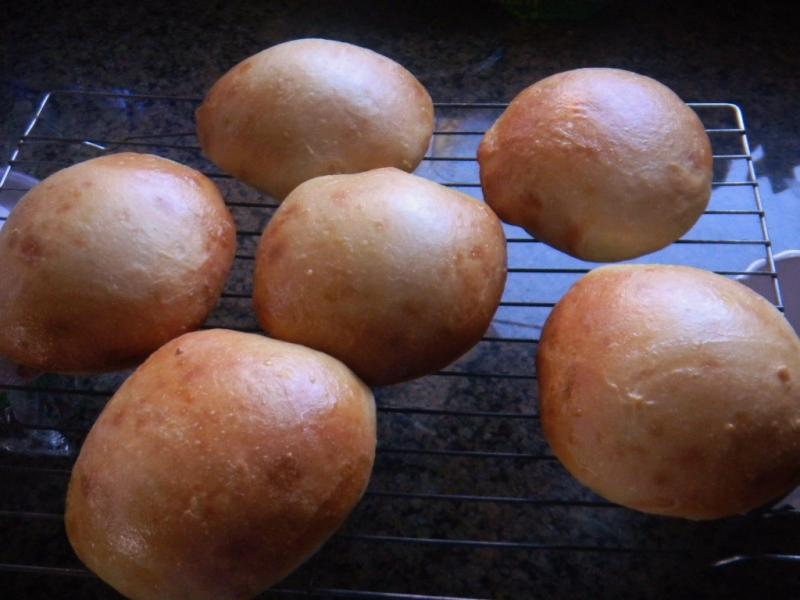I have been messing around with bun recipes trying to get one the girls would eat as opposed to the store bought ones. This time Lucy finally got one to work and we had enough time to let them rise properly – the main problem with the slow rising SD ones.

When we took the brisket out of the fridge after its overnight retard with the sub applied, we started the 155 g poolish with a pinch of ADY, 76.4% hydration at that time. Yes, it was 4:30 AM but the brisket needs 1 1/2 hours to warm up before hitting the 225-250 F smoker at 6 AM and it needs 12 hours in smoker to get to 185 F on the inside.

This is perfect timing for the poolish to work its magic on the buns, get them baked and cooled…. right before the buns are needed to have piles of smoked beef slapped on them. The 6 buns measured out at about 125 g each so they were on the bigger size to account for the fine pile of smoked meat they needed to hold.

When it comes to smoked meats around here there are only two rules. I get the barky parts and, if you try to take some, you will be missing at least a finger or two for your ill advised efforts if you are not a baking apprentice in good standing and in that case you get some too.

The 87 g of flour and 63 g of water with a pinch of ADY and 5 g of honey is the poolish total and it was left undisturbed on the counter for 7 hours until 11:30 AM. Then we mixed the poolish into the rest of the ingredients and did 3 sets of slap and folds for 7, 4,and 2 minutes each with a 15 minute break in between.

We then let the dough rest and ferment for 3 hours until 2:30 PM. The dough was then stretched and folded from the 4 compass points and divided into (6) 125 g pieces and shaped tightly into balls and placed on parchment that was on an un-rimmed baking sheet. After a short 10 minute rest the balls were pressed sort of flat into a 4” rounds.

It was 3 PM when the dough flats were allowed to final proof for 2 hours. At 5 PM, after and butter wash, they went into the oven at 375 F for 15 minutes of baking. The rolls were rotated 180 degrees once – half way through the bake – no steam required.

Yes, home made smoked hot Italian sausage was made just for Sunday's lunch using Friday's multi-grain, whole grain SD. Incredible!

Yes, once the rolls hit the cooling rack we brushed them with butter again and they were completely cool 6 PM when we took the brisket out of the smoker after its 12 hour low and slow smoking. I don't like moping stuff on the meat as it smokes and think doing so takes away from the bark. My brisket always comes out juicey anyway so no moppping required. After a 20 minute rest, the brisket was carved and served with BBQ sauce on the side with potato salad, salad greens with smoked salmon and Cole slaw for sides.

Today's lunch is also Friday's bread but using smoked brisket and pepper jack cheese warmed in the microwave. Not as good as the sausage - but close!


The rolls were perfect, soft, with a moist, open crumb and the rest of the dinner – was terrific. Not much else to say except that today's breakfast was toasted babka also from last Friday's bake - Yummy!

Formula
Poolish
Pinch of ADY
87 g Flour
63 g Water
5 g Honey
155 g total (20% of total dough weight)
Dough
304 g Flour
178 g Water
8 g Salt
20 g Sugar
15g Honey
45 g Whole Egg ( 1 what ever yours weigh)
25 g Butter
595 g Total Dough
Total Weight - 750 g (6) rolls @ 125 g each
Hydration -74.4%
